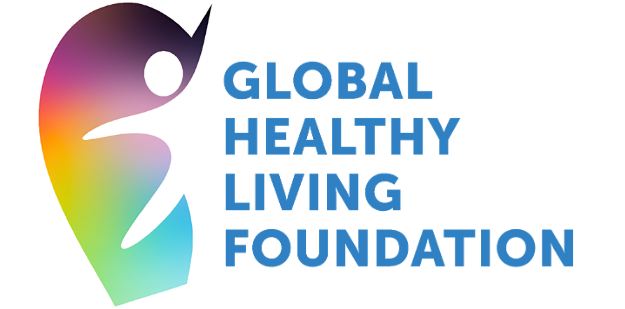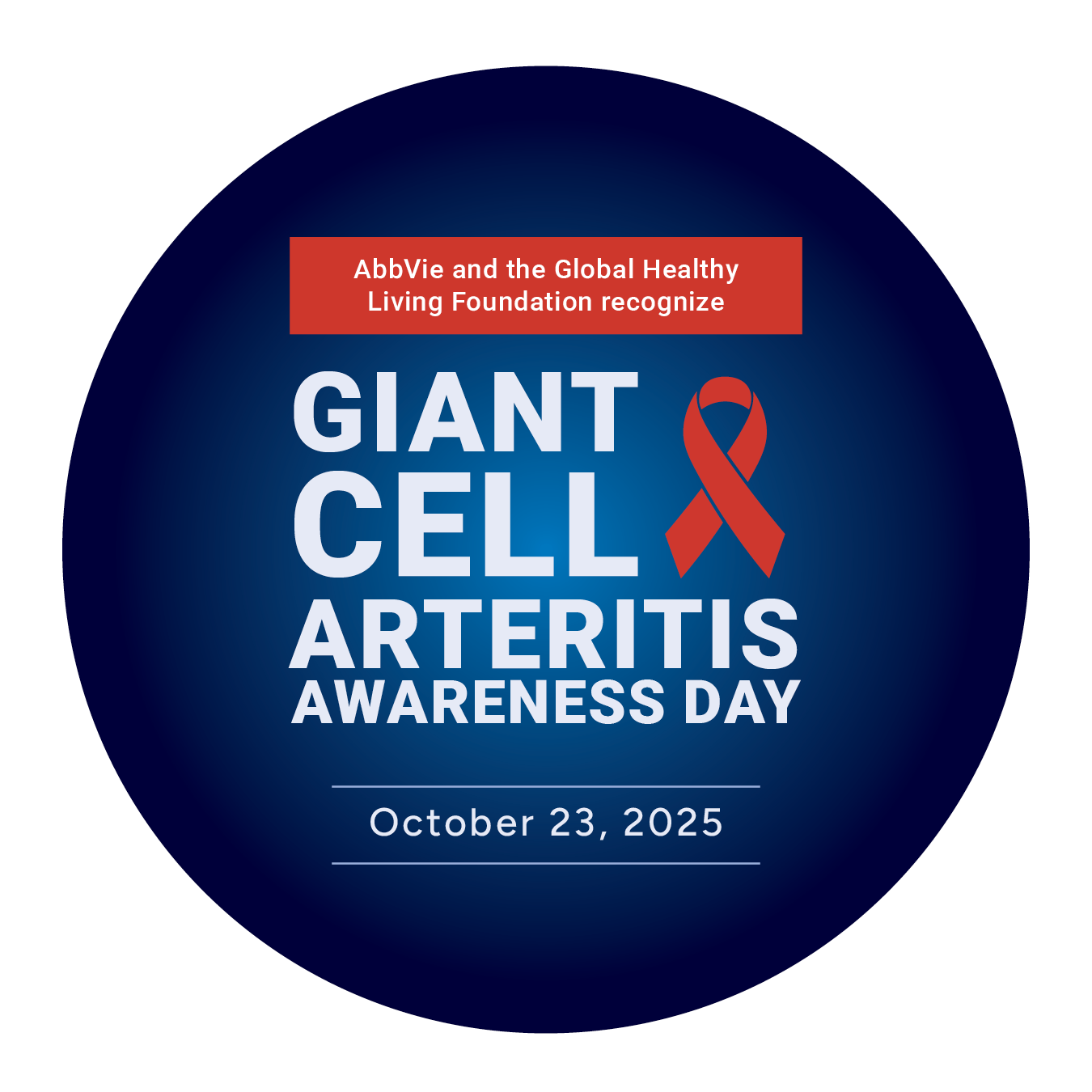Giant Cell Arteritis (GCA)
GCA is a condition where the blood vessels, especially those in the head and neck, become inflamed. This inflammation can cause severe headaches, jaw pain, and vision problems. Learn more about GCA and a related condition, polymyalgia rheumatica (PMR) below.
What is Giant Cell Arteritis?
Giant Cell Arteritis, or temporal arteritis, is not a well-known disease. But it’s more common than you might think: GCA is the most common form of vasculitis (blood vessel inflammation) in adults, according to the Johns Hopkins Vaculitis Center. But it’s easy to mistake GCA for other conditions, such as headache, migraine, or even stroke, because its primary symptoms include severe headaches, tenderness around the temples or scalp, and vision problems.
THE PATIENT VOICE
“Rather than focusing on the ‘I can’t do this,’ it’s more, ‘Okay, what can I do?’… So that I can be more fully embracing of what life is, in terms of what’s ahead of me. I think that’s what the important measure is: looking forward.“
-Nathalie R., GCA Patient
THE HEALTHCARE PROVIDER PERSPECTIVE
“A patient may come in with a completely different idea about what is remission or low disease activity for them…There might be completely different targets of treatment. I also want to know, what is your goal? What would you most like to regain in your life?“
– Dr. Philip Mease
RECENT STUDIES ON GCA
Baig et al. (Eye and Brain, 2019)
Early recognition and treatment of giant cell arteritis (GCA) with prompt corticosteroid therapy and the use of fast‐track clinics significantly reduces permanent vision loss and improves visual prognosis. The review discusses diagnostic algorithms—including laboratory, ultrasound, PET/CT, and temporal artery biopsy—highlighting the critical importance of early diagnosis and treatment in preventing ischemic complications.
Vasculitis Foundation Giant Cell Arteritis Brochure (2023)
This patient‐focused brochure defines GCA as an inflammatory disorder of medium‐ and large‐sized arteries in adults over 50, outlines key symptoms (headache, jaw claudication, scalp tenderness, visual changes), and describes diagnostic steps—physical exam, ESR/CRP, imaging, and temporal artery biopsy. It emphasizes immediate high‐dose corticosteroids and newer steroid‐sparing biologics like tocilizumab to prevent serious complications such as blindness, stroke, and aortic aneurysm.
Prior et al. (BMC Medicine, 2017)
A systematic review and meta‐analysis of 16 studies found a pooled mean delay of 9.0 weeks (95% CI 6.5–11.4) from GCA symptom onset to diagnosis, with non‐cranial presentations experiencing a significantly longer delay of 17.6 weeks (95% CI 9.7–25.5). High heterogeneity underscores the need for improved public awareness and fast‐track referral pathways to reduce diagnostic lag and prevent vision loss.
US Census Bureau Population Estimates by Age (2024)
Annual U.S. Census Bureau estimates (April 1, 2020–July 1, 2024) provide resident population by single‐year age and sex, showing growth from 331.5 million to 340.1 million and a rising median age from 38.5 to 39.1 years. Detailed age cohorts guide demographic planning and resource allocation for healthcare and social services.
Ameer et al. (StatPearls, 2024)
This comprehensive review covers GCA’s epidemiology, genetic predisposition, and immune‐mediated pathophysiology, detailing cranial and large‐vessel manifestations. It summarizes diagnostic modalities—lab tests (ESR, CRP), temporal artery biopsy, ultrasound, PET/CT—and management with high‐dose glucocorticoids and interleukin-6 inhibitors, stressing early treatment to prevent ischemic complications.
Ponte et al. (Rheumatology, 2020)
This article reviews diagnostic approaches for GCA, comparing temporal artery biopsy’s high specificity but limited sensitivity to ultrasound’s noninvasive, bedside assessment and other imaging (MRI, CT, PET). An algorithm is proposed that prioritizes ultrasound in suspected cranial GCA, reserving biopsy or additional imaging for equivocal cases to improve diagnostic accuracy and patient safety.
GCA VIDEOS
Shining a Light on GCA: A Story of Resilience for GCA Awareness Day
From Pain to Diagnosis: Jenny’s Journey with Giant Cell Arteritis
Giant Cell Arteritis Treatment Advances Explained by Dr. Robert Popovian
The Symptoms I Couldn’t Ignore: Kathi’s Path to a GCA Diagnosis
RELATED CONDITION: POLYMYALGIA RHEUMATICA
Polymyalgia rheumatica (PMR) is a chronic inflammatory rheumatic condition that affects approximately 800,000 people in the U.S., occurring almost exclusively after age 50. Moreover, many patients with PMR also have associated GCA, potentially leading to additional complications. Learn more at GHLF.org/PMR

Baseline Evaluation of Diagnoses and Prescribing Patterns in Polymyalgia Rheumatica
We conducted a baseline evaluation of electronic health records (EHR) and claims data to examine PMR prevalence and glucocorticoid (GC) prescribing patterns.
MORE GCA PATIENT RESOURCES
JOIN OUR EMAIL LIST FOR MORE RESOURCES
By subscribing, you agree to receive emails from The Global Healthy Living Foundation. We will never sell your data. See our Privacy Policy.


These resources are made possible with support from AbbVie.
Disclaimer: The contents of this website are for informational purposes only and do not constitute medical advice. This resource is not intended to be a substitute for professional medical advice, diagnosis, or treatment. Always seek the advice of a physician or other qualified health provider with any questions you may have regarding a medical condition
References
- Eye and Brain: ‘Giant cell arteritis: early diagnosis is key’
Iyza F Baig, Alexis R Pascoe, Ashwini Kini, Andrew G Lee - Vasculitis Foundation: ‘Giant Cell Arteritis (GCA)’
- BMC Medicine: ‘Diagnostic delay for giant cell arteritis – a systematic review and meta-analysis’
James A. Prior, Hoda Ranjbar, John Belcher, Sarah L. Mackie, Toby Helliwell, Jennifer Liddle and Christian D. Mallen - US Census Bureau: ‘Annual Estimates of the Resident Population by Single Year of Age and Sex for the United States: April 1, 2020 to July 1, 2024’
- NCBI Bookshelf- A service of the National Library of Medicine, National Institutes of Health: ‘Giant Cell Arteritis (Temporal Arteritis)’
Muhammad Atif Ameer, Sarosh Vaqar, Babak Khazaeni - Ponte Rheumatology: ‘Diagnosis of giant cell arteritis’
Cristina Ponte, Joana Martins-Martinho, and Raashid Ahmed Luqmani




